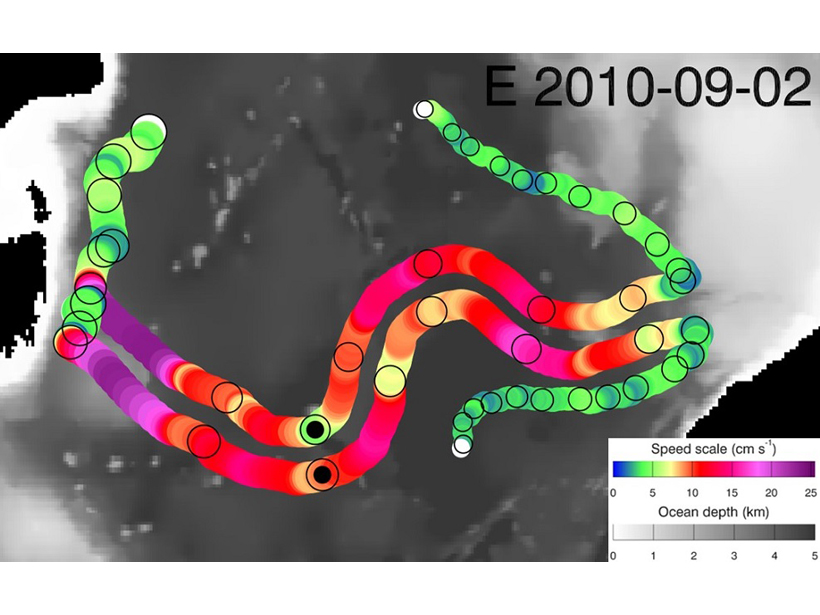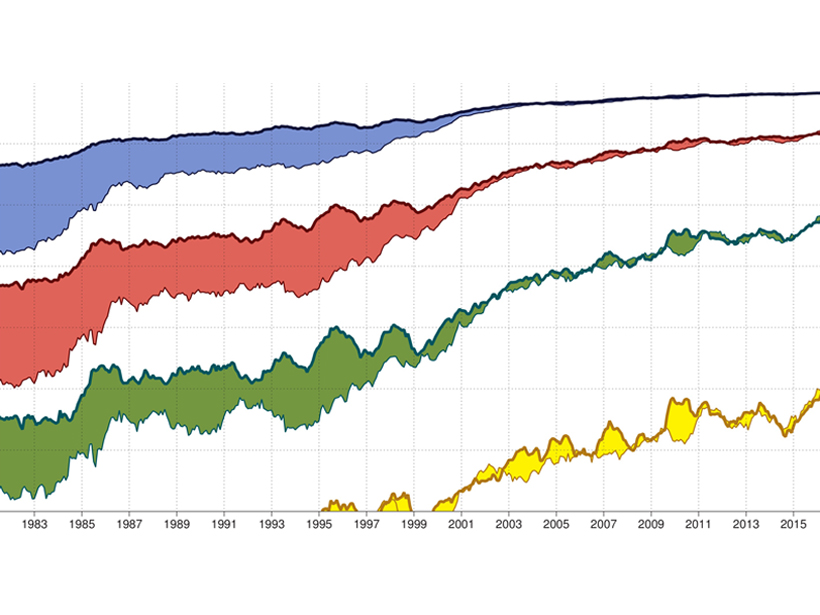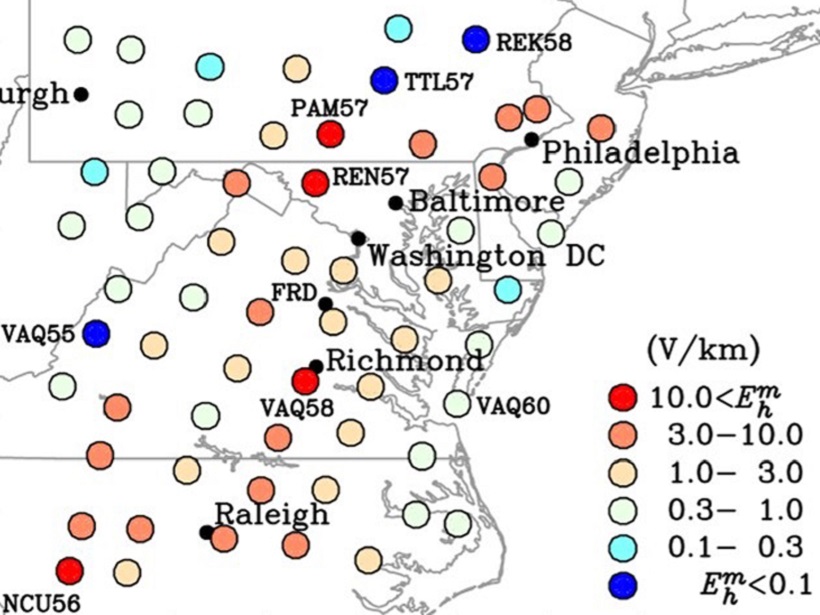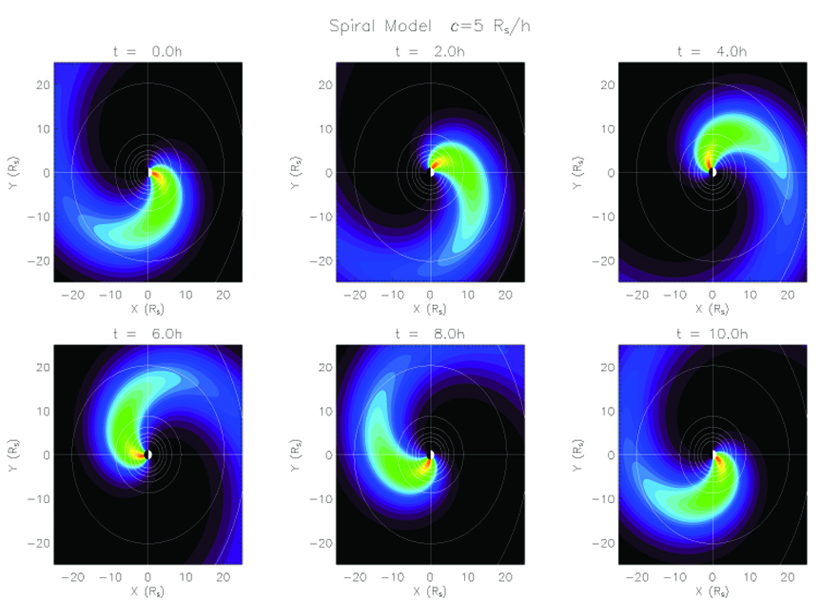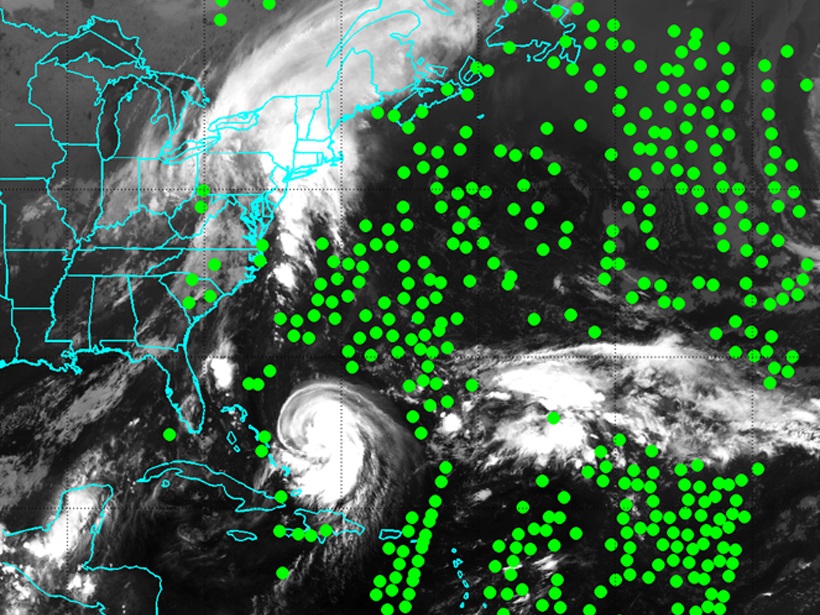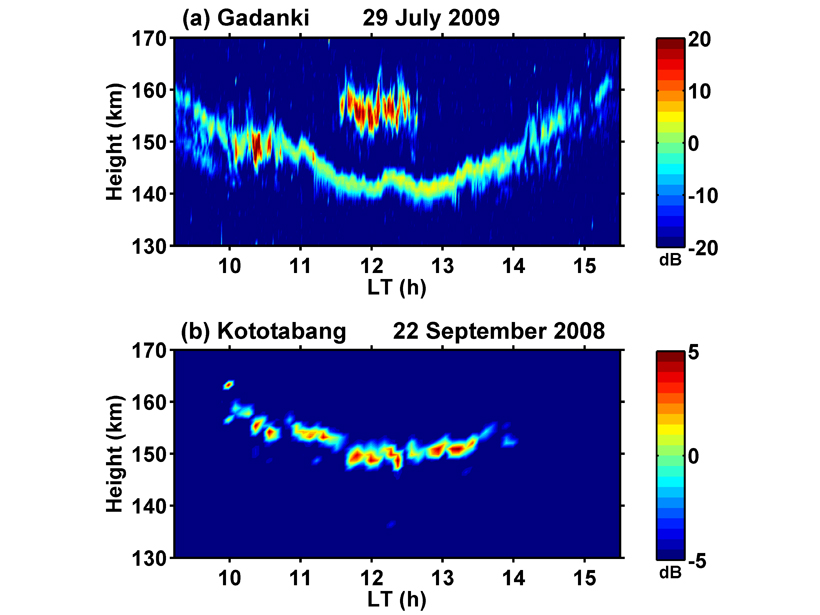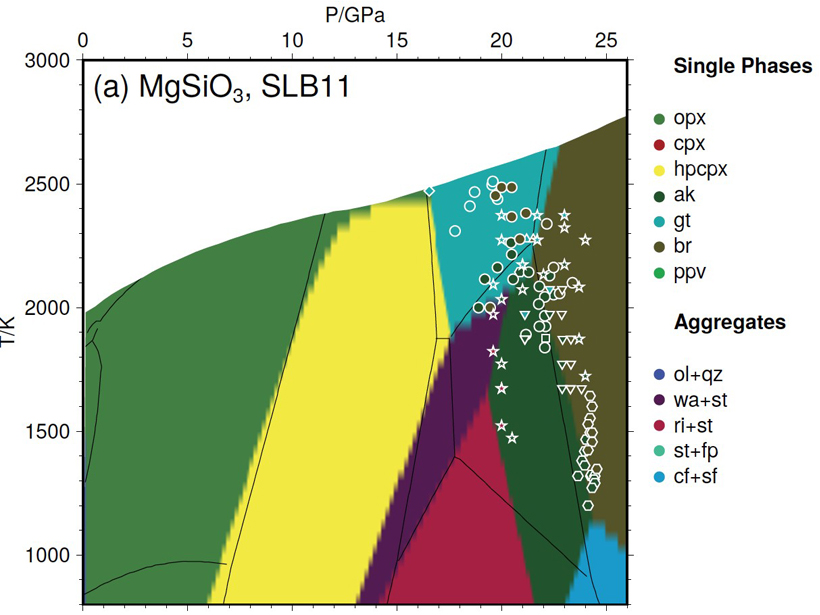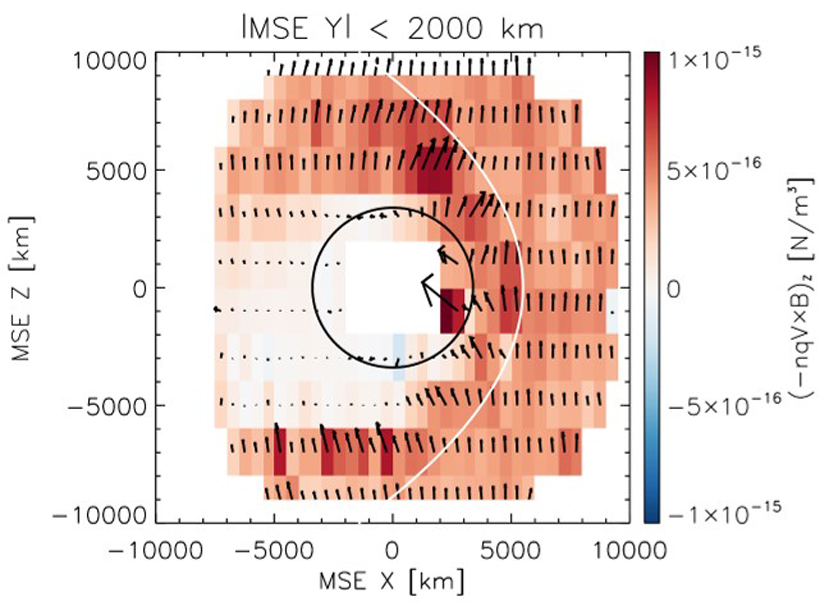The first observational evidence of dipole eddy pairs (modons) in the southern midlatitude ocean reveals that they move faster, live longer, and travel greater distances compared to single eddies.
Editors’ Highlights
Space Weather: Exploiting Meteorology’s Toolkit
Space weather forecasting is benefiting, and can benefit much further, from concepts and tools already developed by the global meteorological community.
Plotting the Pliocene Polar Front
Understanding changing conditions in the south polar oceans during the warm late Pliocene period may help predict the impact of contemporary warming.
New Estimates of Ozone Transport in Extratropical Cyclones
Cross-tropopause ozone transport in midlatitude cyclones, coincident with dry air intrusions, is derived from satellite and reanalysis data organized in cyclone-centric coordinates.
Mapping Extreme-Value Geoelectric Fields
To help mitigate magnetic storm interference on electric power grid operations, extreme-value geoelectric fields have been mapped across the mid-Atlantic United States.
A Close-in Look at Saturn’s Periodic Space Bubble
When it comes to Saturn’s space environment, summer wins over winter in controlling the periodic flows of electrically charged particles and magnetic fields.
Listening to the Clouds
The assimilation of cloud-cleared infrared data improves numerical weather forecasting, especially for hurricanes, by providing thermodynamic information in cloudy atmosphere.
New Observations of Mysterious Radar Echoes
Exploring the relationship between solar extreme ultraviolet radiation flux and 150-km radar echoes.
New Thermodynamic Model for Computing Mantle Mineralogy
A newly developed open-access software package called MMA-EoS can calculate whole mantle mineralogy in multicomponent systems by Gibbs energy minimization.
Where the Solar Wind Meets Mars
A comprehensive look at how the solar wind is diverted around Mars, including the relative strength of the three biggest forces at work in this region.

